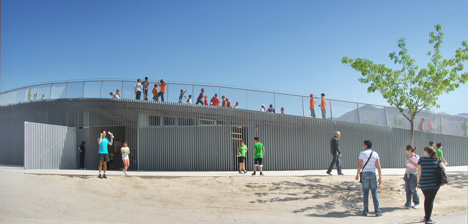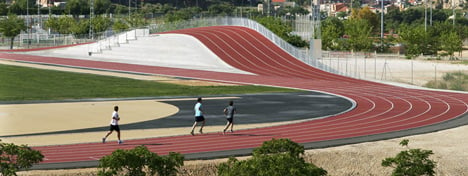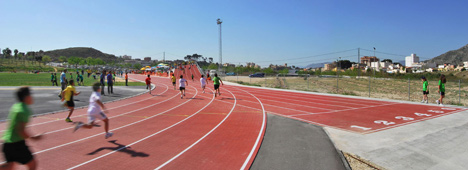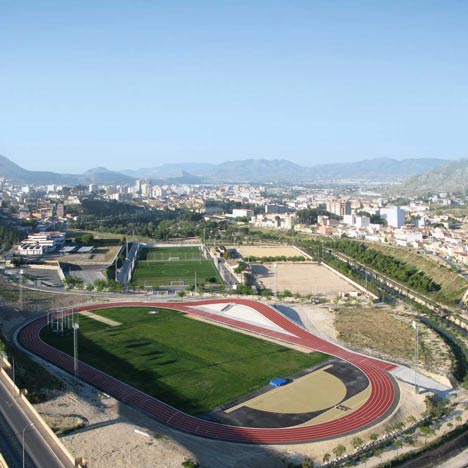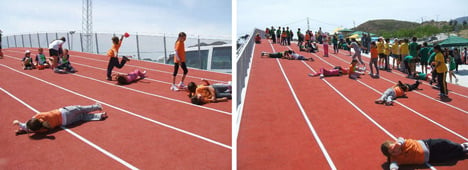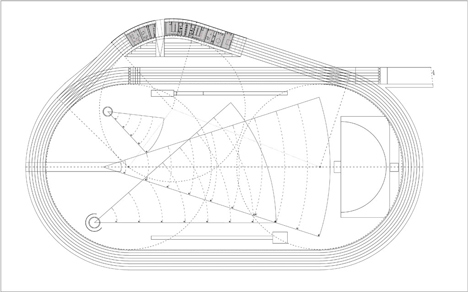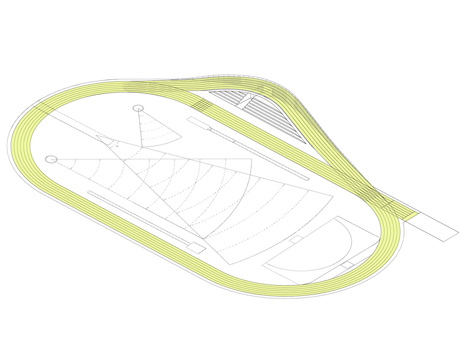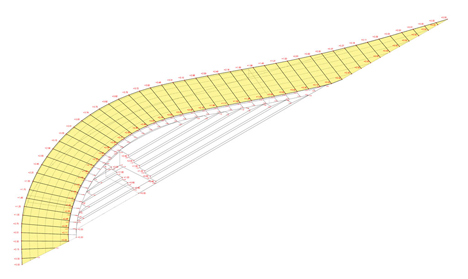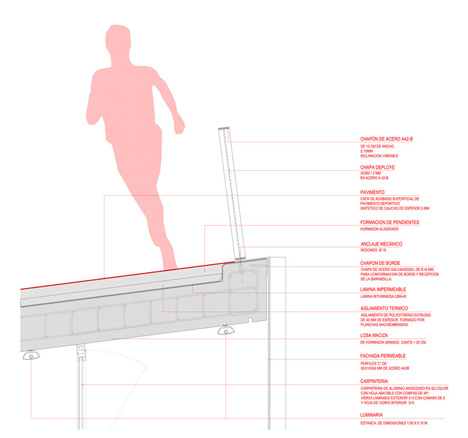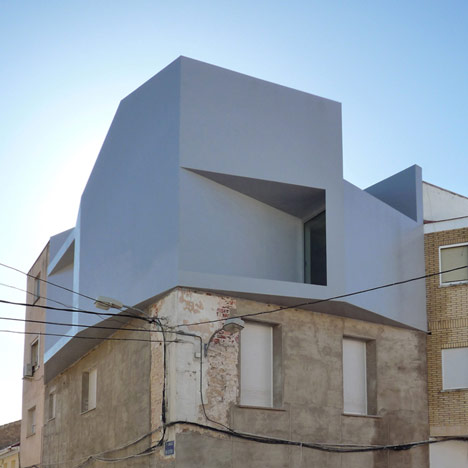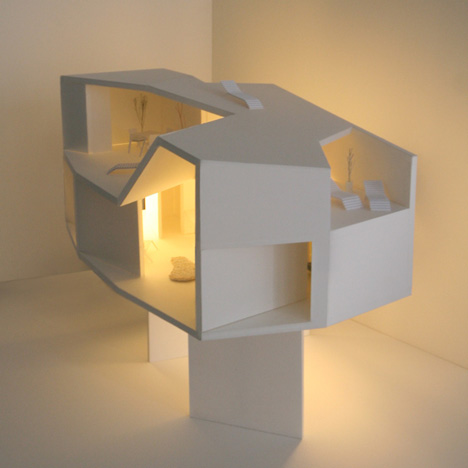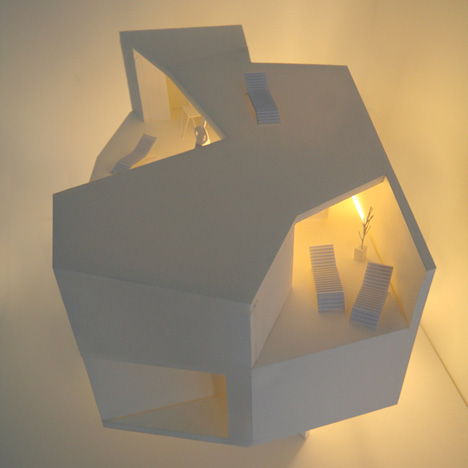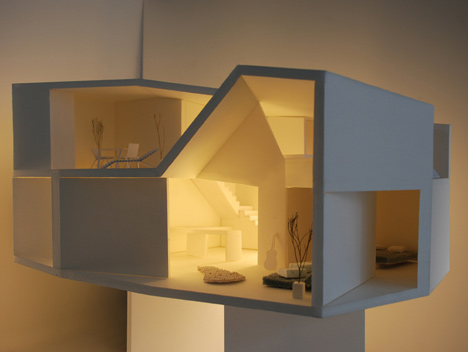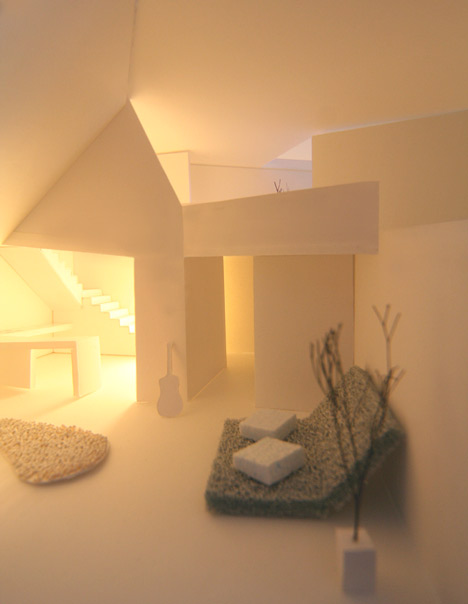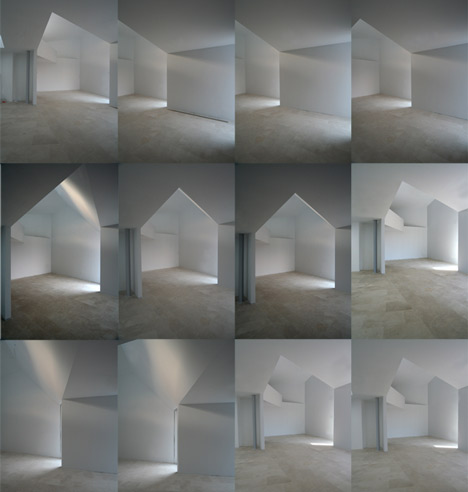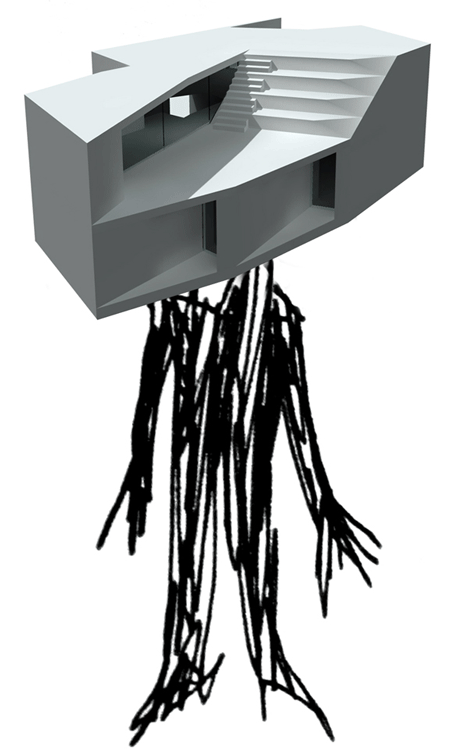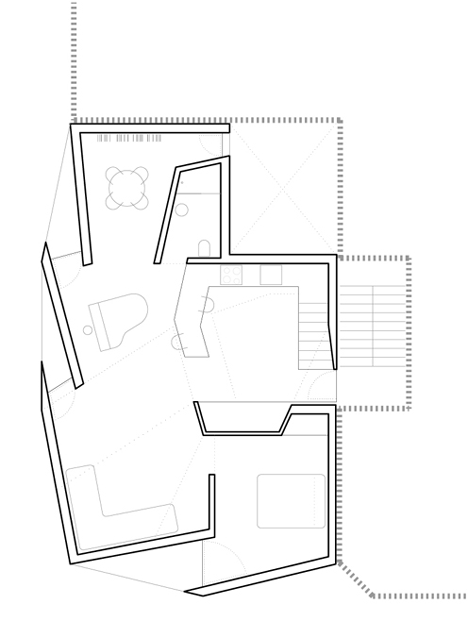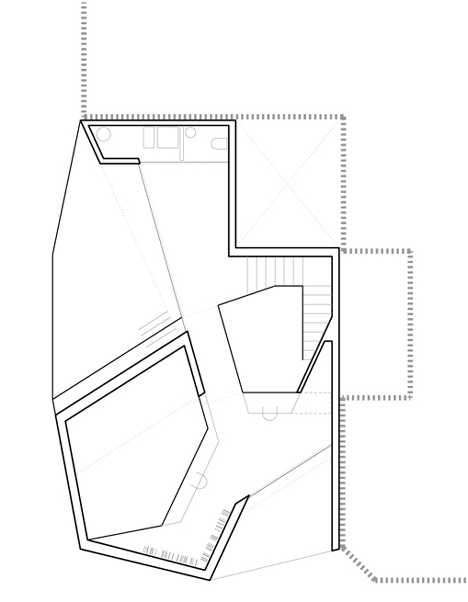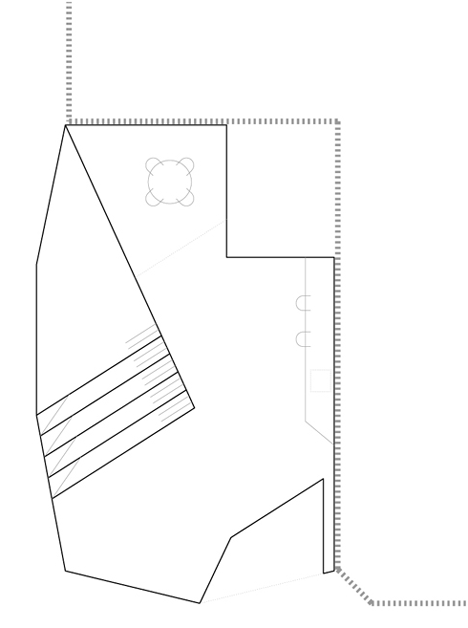One such dealer is Javier Peres, who opened a Berlin outpost of his Culver City gallery in 2004. Last June, citing the absence of foot traffic in Los Angeles, Peres closed his stateside operation to focus on Berlin, complementing his large space in Kreuzberg with a second, in a remodeled 18th-century Mitte building. In the past seven years, he has seen the city experience both boom and bust. "When I had my first opening, the Tempelhof airport called the gallery to ask why all these people were landing in their private jets to go to Peres Projects. They thought we were a peace center." Then came the global financial crisis, and with it about 100 closings. "Many straggler galleries left. So did those who only had satellite spaces here," Peres says, but "most of the better galleries have expanded" and "recently, a lot of new galleries have opened, many by former directors of larger galleries."
Despite having moved his entire operation here, Peres notes that the city poses certain challenges. "For galleries like mine, the business climate has continued to be difficult" because of the cooled ardor for younger artists, he says. "For many of the higher-end galleries, it’s become somewhat easier because a lot of the collectors want a known quantity."
The effects of two major closings can still be felt. In December 2009, Cologne dealer and longtime art-world fixture Rafael Jablonka shuttered the Berlin branch he had opened only three years before, and this past December, the Christie’s-owned Haunch of Venison, which maintains outposts in London and New York, pulled the plug on its Berlin location.
Haunch director Matt Carey-Williams attributes the closure to the lack of a collecting community in the city. Others blame the gallery’s outsize expectations and failure to understand a local scene where many still frown on expensive parties with in-the-know winks and million-dollar handshakes. "You don’t see people walking down the street with arms full of shopping bags," notes Peres.
When they opened in Berlin in 2007, Haunch founders Harry Blain and Graham Southern (who have since left to start their own gallery in London, with plans for a Berlin branch) astutely tapped into the local zeitgeist, celebrating the occasion with a live performance by Conceptual artist Jamie Shovlin’s fictional German glam band, Lustfaust. As the gallery vied for an international spotlight demanding more pizzazz, however, it lost that local touch. Tim Neuger, who runs the powerhouse Berlin gallery Neugerriemschneider with Burkhard Riemschneider, cites a splashy Haunch show of Damien Hirst and Michael Joo in May 2010: "It coincided with the opening of Soho House Berlin, and they threw a big party, which was just appalling. You stood in the middle of Berlin and watched people try to play London."
"Haunch of Venison kind of made sense, but it was never good for the city or a contribution to what we’ve created here over the past 15 years," says Martin Klosterfelde, one of Berlin’s most prominent dealers. Klosterfelde believes many gallerists from outside expected Berlin to become the next big thing and wanted a slice of the proverbial pie without investing too much effort in, or even becoming known to, the local arts community. "If you don’t come here yourself, it becomes anonymous. This place bears my name, and it makes a big difference whether I’m here or not," Klosterfelde says of his space on Potsdamer Strasse. It’s in the old modern-art district, which is poised to become the city’s cultural nexus again, with galleries like Giti Nourbakhsch and Esther Schipper opening and start-ups Reception and Tanya Leighton adding momentum.
Like Haunch, Jablonka’s gallery succumbed to inflated ambitions. "Jablonka was always amusing," says Neuger. "He brought an amazing program, but he tried to establish himself more within the realm of a 'Kunsthalle,' with sensational, highly produced shows that ran five to six months."
Jablonka himself, who is focusing on his former base, in a Gottfried Böhm-designed church outside Cologne, puts responsibility for his Berlin debacle on the city’s "economically retarded" state. He may be half right. According to a report by the Institute for Strategy Development, a Berlin-based consulting firm, although about 60 of Berlin’s estimated 500 galleries had revenues of more than €500,000 ($681,000) in 2009, more than half earned less than €50,000 ($68,000). The most successful dealers depend on loyal collectors who live elsewhere but travel regularly to Berlin and, more recently, on a slowly growing group of smaller resident collectors.
"Our best collector sits in Buenos Aires and has been coming here twice a year for the past 15 years," says Riemschneider. Adds Neuger: "There’s Bernardo [Paz] in Belo Horizonte, people from São Paulo, Mexico, and Turkey. From London, maybe Mario Testino, every now and then. There used to be this idea that Berlin sold 90 percent of its work to New York. That world doesn’t exist anymore. In New York, we deal with maybe 5 or 10 people. We’ve started selling to China."
Schipper, who has doubled the staff of her eponymous gallery in the past six years and recently moved from Mitte to a larger space in Schöneberg, across from the Neue Nationalgalerie, says the bulk of her sales come though art fairs and through correspondence with collectors; only around 10 percent are made directly at her Berlin space. "I would not be able to make a living of it. Still I think one of our roles is to develop the scene here, and that takes time," says Schipper. "It’s not just a Berlin problem but a German problem. The previous generation was extremely active collectors. They wanted to create a new culture after World War II and redefine a new Germany. You saw the rise of Cologne, with its art fair and museums. The children and grandchildren have not continued the tradition. They are more interested in buying cars. It used to be art collecting that gave you social status."
Yet a following of faithful collectors could be enough to keep a gallery going. In Berlin, "all you need is one collector who is supportive of you," says Peres. "You could open a beautiful little space in Kreuzberg, Neukölln, or even Prenzlauer Berg for €800 [$1,100] a month. It’s still happening, that experimental nature that Berlin is known for." Klosterfelde agrees: "You can survive without doing any art fairs when you work with the right artists and understand the right collector."
The rise of Berlin has paralleled the decline of Cologne, the art center of Germany since the 1970s and a city whose traditional atmosphere stands in stark contrast to Berlin’s openly creative one. Schipper was among the first dealers, along with Max Hetzler, to move from Cologne to Berlin in the early 1990s. Others now split their time between the two locations. Even Michael Werner, one of the oldest and, by some accounts, most conservative Berlin dealers, has teamed up with Gordon VeneKlasen, the director of his New York gallery, on a Berlin space with an experimental program of video screenings, sound art, and artist talks.
"When we came to Berlin two and a half years ago, we thought that there were no collectors," says Philomene Magers, of Sprüth Magers, which moved from Cologne, where it still keeps an office, and launched an imposing mothership in a former Mitte dance hall. "We structured the gallery more like an institution than a selling operation, and we had to change it back. We not only had packed openings; we realized we were actually selling."
Those Berliners who are buying appear more adventurous than their Cologne counterparts, and more open to work by young international and German artists. "I have a couple of clients who have introduced my gallery to their friends to stop them buying just Baselitz and Richter," says Peres. "That’s what they always bought in Cologne, and they’re very resistant." Some Berlin collectors have shown their commitment to the city and its art by opening big showrooms and minimuseums, among them Thomas Olbricht’s me Collector’s Room and Christian Boros’s Sammlung Boros, a converted bunker filled with works by Berlin-based artists like Anselm Reyle and Olafur Eliasson.
Although many art buyers now favor smaller works, the availability of expansive spaces in the city remains a major attraction for galleries. Contemporary Fine Arts (CFA) has its home in a sleek four-story modern colossus of brick, wood, and glass by architect David Chipperfield, with views across the Kupfergraben Canal to Museum Island, home to five major museums. Sprüth Magers, on Oranienburger Strasse, displays immense works and several other galleries are rumored to have sizable storage facilities for private viewings of large-scale works. Open museum-style venues become assets when real museums’ budgets don’t cover the production costs of expensive shows. "Why deal with a middleman when you can hire a great curator to write the book for the show and do it in your own premises?" asks Peres. Adds Schipper, "Our in-house production of exhibitions should have institutional quality, even if they’re small. It addresses an audience."
Berlin’s primary resource, though, remains the 20,000 or so artists who have turned it into a bohemian enclave. Neuger and Riemschneider say they are in Berlin because "most of the artists we work with either live in, work in, or like Berlin. There is honesty and a very direct line" of communication. Klosterfelde speaks to some of his artists three or four times a day and is closely involved with their creative process.
Such informality and approachability are typical of the dealer-artist relationship in Berlin. Zhivago Duncan’s story is a case in point. Now 30 years old, the American artist came to Berlin in 2007 fresh out of the Chelsea College of Art & Design, in London. That same year, he heard about CFA director Bruno Brunett and sought him out at the Art Forum fair, introducing himself with "I’m Zhivago Duncan. Someone told me you’re the only man with the balls to sell my work."
"Bruno laughed, gave me a card, and said, ‘E-mail me.’ I never did," Duncan recalls. A few years later, Bennett did come to his studio. "I was worried that my larger prints were too much like Warhol. Bruno said, ‘They’re great. Do what you want — this work takes balls. Yeah, you told me that at an art fair two years ago." In January, CFA gave Duncan a show.
"Berlin has a total freedom like nowhere else," says the artist, giving the same reason that many of his peers express for living in the capital. "Only the fumes of it remain in other cities."
Even so, some longtime artistic denizens are apprehensive about what the changes could mean. One of Berlin’s most colorful creative forces, the painter and performance artist Jonathan Meese has a roomy studio in the gentrifying Prenzlauer Berg neighborhood. He has a faithful following of local collectors, developed over the past 10 years, but he sees Darwinian selection extending from the galleries to the artists themselves. "It’s too crowded," Meese says, noting the waves of artist arrivals, with the Chinese the latest big group to land. "Soon, competition will be brutal. I don’t quite understand why people do this. It will explode."
"Berlin: Where Bohemia Meets the Market" originally appeared in the April 2011 issue of Art+Auction
. For a complete list of articles from this issue available on ARTINFO, see Art+Auction
's April 2011 Table of Contents.
Olafur Eliasson’s "Berlin Colour Sphere," 2006, in the collection of Christian Boros
Courtesy Noshe and Sammlung Boros











